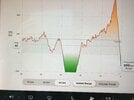It’s now been two months and I’ve travelled 3000kms in my SR+, and I thought I would try to capture some of my thoughts and experience with the car.
The transition to the Tesla way of doing things has been easier than I had imagined, interestingly the multifunction stalks required more thought and practice than the single screen interface. There is a lot of thought and engineering that has gone into the user experience that contributes to the delight of driving the car and that helps you overlook the flaws of the vehicle. I’ve gotten a lot of joy from the subtle little solutions that the Tesla engineers have conjured up, from the way the vehicle Hold engages and releases smoothly and flawlessly, to the design of the air vents that use a jet of air to change the elevation of their direction.
The car is engaging to drive, and any drive is dominated by that immediate mountain of instant torque, which most passengers can’t believe is from the slowest Tesla on the market. Far less shouty is it’s handling, and whilst the electric steering isn’t the most communicative, does let you enjoy a traditional RWD experience that’s enhanced by the car’s low centre of gravity. All that mass down low however does make itself felt during braking and to a lesser extent in the ride which is comfortable without being plush. You can feel that this is a heavy car, and even with the assistance of the regenerative braking, particularly on downhill sections, on any mildly spirited drive you find yourself digging in for more assistance from the brake pedal like you would in a luxury spec SUV.
Whilst there is a long list of first rate things that the car does like the excellent headlights or the smoothness of progress with electric drive, there remain some flaws that remind you that it’s impossible to find perfection (and please everyone). By far the most frustrating aspect has been the TACC, with far too many phantom braking events than would be found in a first generation AEB from ten years ago. The formula for stopping and taking off again seems to be back to front, and I would much prefer it if it would brake gently / cautiously to a stop and then be more aggressive in keeping the gap to the car in front constant when moving off. Instead the car performs a P Plateresque late braking manoeuvre into stopped traffic and then moves away from a stop too slowly.
With the amount of information online and resources like this forum, I’ve found it very easy to transition into the electric car way of doing things. Adopting tactics like showing the battery percentage instead of kms, getting comfortable with running it down to lower percentages, testing out different local chargers, and understanding the mindshift of a top up charging strategy from the old way of filling up the tank when on road trips all contribute to reducing the reality of range anxiety. The reality is that the battery has enough range to get me to any number of charging locations, and can go for longer than my bladder can on any road trip.
There has been some change required, but it’s been easy and the end result has been a lot better. I can’t remember the last time I enjoyed a car this much (I didn’t even mention how comfortable the front seats are), and that was such a joy to drive.
Last edited by a moderator:



